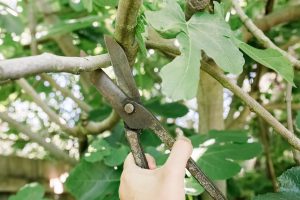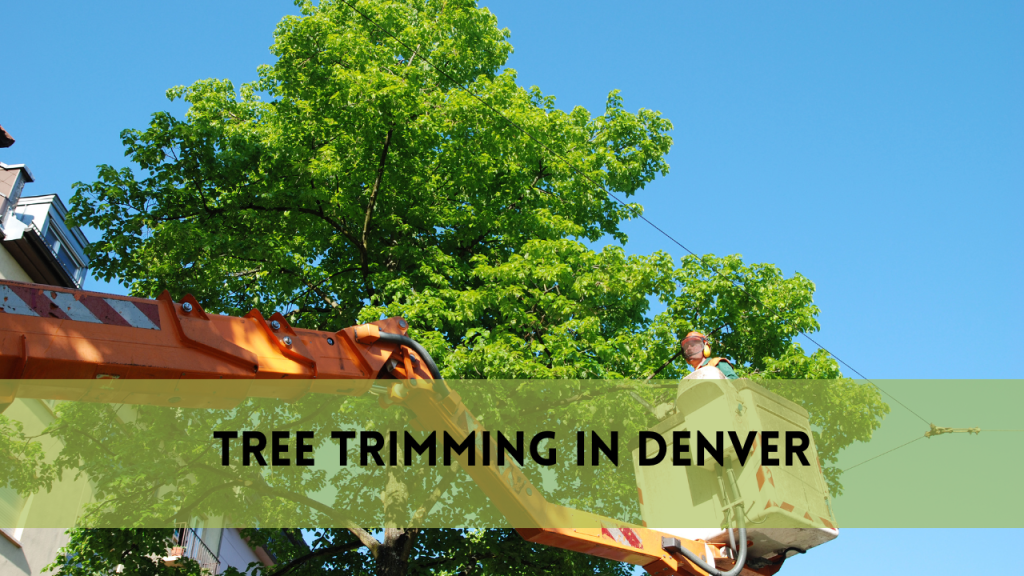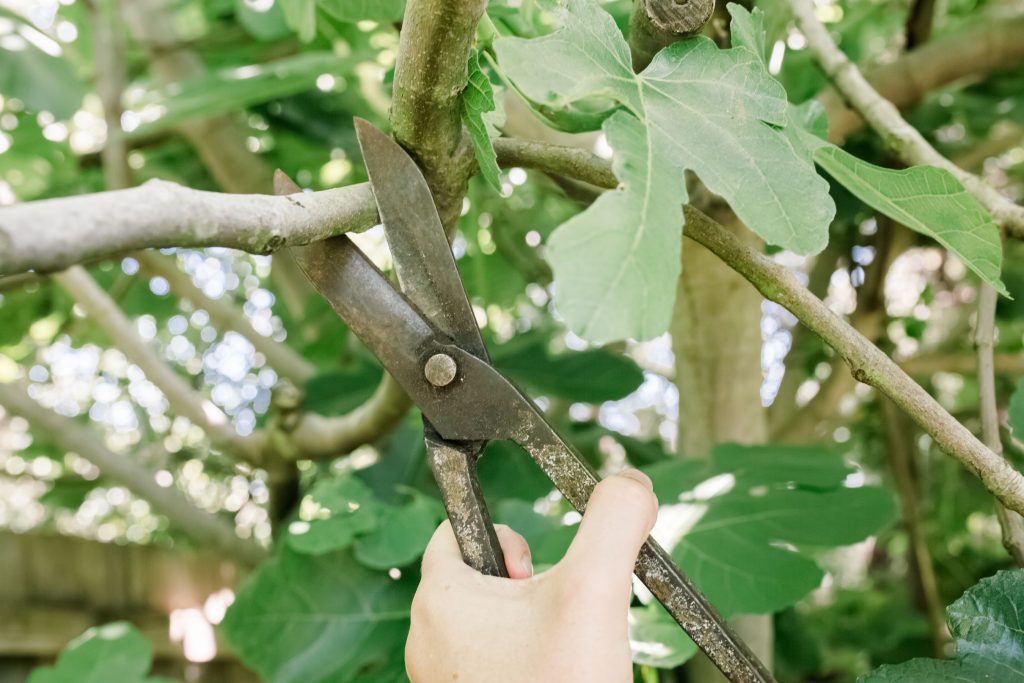How to trim a fig tree?
Cultivating a healthy fig tree requires more than just soil and water; it also necessitates the artistic ability of trimming. Welcome to the ultimate instructions on how to trim a fig tree for arborists, available only at Arborist Heights Whether you’re an experienced arborist or a beginner, this book simplifies the intricate processes of fig tree maintenance, making the process more understandable and accessible. Join us as we explore the delicate complexities of fig tree cutting, where horticultural knowledge meets arborist elegance. Your fig tree’s health is our first focus, and this guide is your road map to success.
Why is fig tree trimming important?
Trimming fig trees is essential for a variety of reasons, all of which contribute to the tree’s general health, productivity, and appearance. Trimming produces a balanced canopy, which ensures sunlight penetration and optimum air circulation, both of which are essential for photosynthesis and overall growth. Regular trimming also helps to remove dead or diseased branches, which prevents infections from spreading throughout the tree. This procedure stimulates new growth, increasing the fig tree’s vigour and output. Proper trimming also helps to maintain the tree’s desirable shape and size, reducing overcrowding and maintaining optimal resource allocation. Trimming also allows for the removal of weak or competing branches, which promotes a healthy and resilient tree structure. Finally, fig tree trimming is an important activity that not only improves the tree’s look but also increases its longevity, assuring a healthy and plentiful harvest for fig fans.
Understanding the Growth Patterns of Fig Trees
Exploring the growth patterns of fig trees is critical for their proper cultivation. Fig trees have distinct properties that influence their growth. Seasonal Growth Cycles, a critical factor, determine when fig trees generate new shoots, leaves, and fruits. Understanding these cycles is essential for effective pruning and care.
Branching behaviour is another important factor that governs how fig trees spread and develop canopies. Recognizing the natural branching patterns helps arborists shape the tree properly.

Furthermore, root development is critical for fig trees’ resilience and nutrient absorption. Understanding how fig tree roots grow aids in identifying optimal planting areas and addressing any problems.
Arborists obtain significant insights into these growth patterns under topics such as “Seasonal Growth Cycles,” “Branching Behaviour,” and “Root Development,” developing a closer relationship with their fig trees and assuring successful, long-term management.
Choosing the Right Tools for Fig Tree Trimming
- Pruning Shears
- Loppers
- Pruning Saw
- Hedge Shears
- Hand Pruners
- Pole Pruners
- Protective Gear: Gloves and Safety Glasses
When is the Best Time to Trim Fig Trees
Determining the best time to prune your fig tree is critical for its health and productivity. Arborists generally agree that the optimal time to trim fig trees is late winter or early spring, before the new growth season begins. This timeframe guarantees that the tree remains dormant, reducing stress and allowing it to devote energy into new shoots and fruit growth.
Fig trees are more resistant to trimming during this time, and the absence of leaves allows for better sight while shaping and examining the tree’s structure. Furthermore, cutting in late winter reduces the likelihood of frost damage to freshly exposed growth. Aligning your cutting plan with the natural growth cycles contributes to the general well-being.
How to trim a fig tree
Pruning Techniques for Healthy Fig Trees
Understanding pruning strategies is essential for sustaining the health and vitality of fig trees. “Pinching for Vigorous Growth” is a technique that gently pinches off the tips of new shoots to promote lateral growth and a bushier tree.
“Thinning Out for Sunlight Penetration” entails strategically eliminating overcrowded or crossed branches to allow sunlight to reach every section of the tree. This guarantees even ripening of the fruit and lowers the danger of illnesses caused by insufficient air circulation.

Additionally, “Removing Deadwood” is critical for eliminating sick or dead branches, hence avoiding the spread of pathogens. Regular use of these treatments improves the structural integrity, look, and productivity of your fig tree, resulting in a sturdy and flourishing addition to your garden or orchard.
Fig Varieties and Their Unique Trimming Needs
Diverse fig species produce a wide range of flavours and growth patterns, necessitating customized pruning techniques. For the Celeste fig, which is known for its sweet flavour, optimal pruning entails sculpting its compact growth habit and regulating its prolific fruiting. “Optimizing Celeste Fig Pruning” walks enthusiasts through the intricacies.
In contrast, the Brown Turkey fig, known for its flexibility, has specific trimming considerations, as detailed in “Brown Turkey Beauty: Trimming Tips.” Understanding its development patterns and fruiting habits assures a healthy and fruitful tree.
Tailoring your trimming procedures to the distinct qualities of each fig type ensures not just their health and vigour, but also a profusion of delicious figs. Explore these trimming ideas to grow a diverse and robust fig orchard, according to their individual needs.
Related Posts:
FAQS
Can I Trim My Fig Tree During the Winter?
Learn about winter concerns for fig tree trimming to keep your tree healthy during the colder months.
Is over-trimming harmful to fig trees?
Discover the potential consequences of excessive cutting and how to establish the appropriate balance for maximum development.
How Often Should I Trim My Fig Trees?
Find the ideal trimming frequency for a healthy and blooming fig tree.
What Tools Should I Avoid When Trimming Fig Trees?
Learn the do’s and don’ts of fig tree trimming equipment to keep your tree healthy.
Can I Trim My Fig Tree With Regular Shears?
Understand the significance of utilizing the appropriate tools for precise fig tree pruning.
When Can I Expect Results From Trimming My Fig Tree?
Patience is essential—learn about the time frame for noticing results following a trimming session.
Conclusion
Finally, recognizing the unique growth patterns and trimming requirements of fig trees enriches the process of nurturing healthy and productive trees. With knowledge of the finest pruning procedures, ideal timing, and concerns for various fig kinds, you’ll be well-prepared to go on a rewarding horticultural journey.
Incorporating these methods not only ensures the health and vigour of your fig trees, but also prepares them for a big harvest. Whether you prefer the sweetness of Celeste figs or the versatility of Brown Turkey figs, this detailed guide at [Site Name Arborist Heights] will help you master the art of fig tree ca



